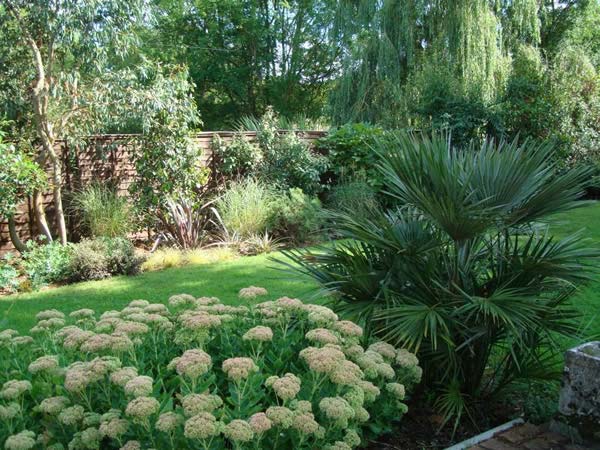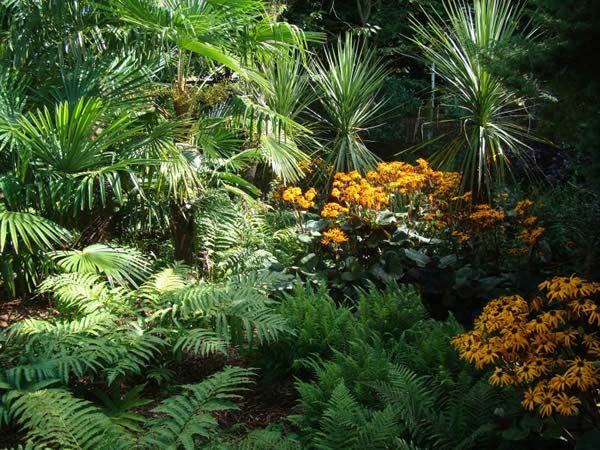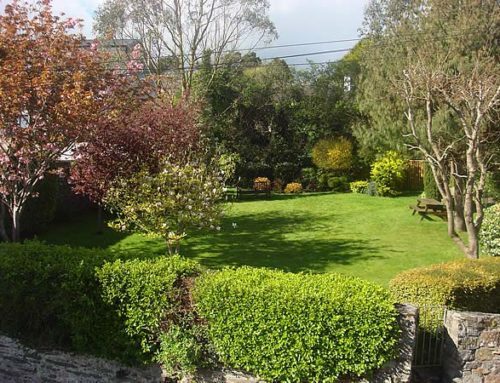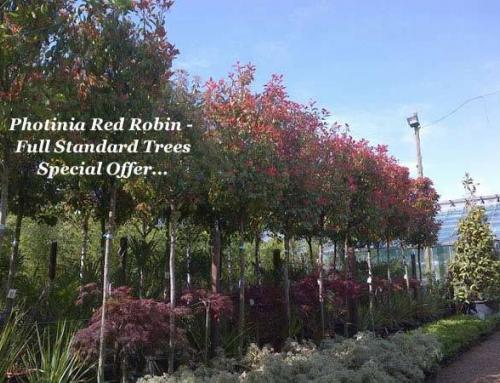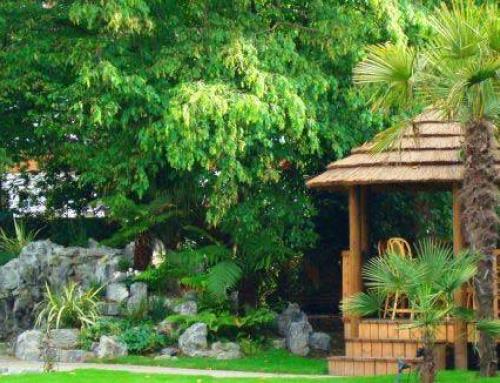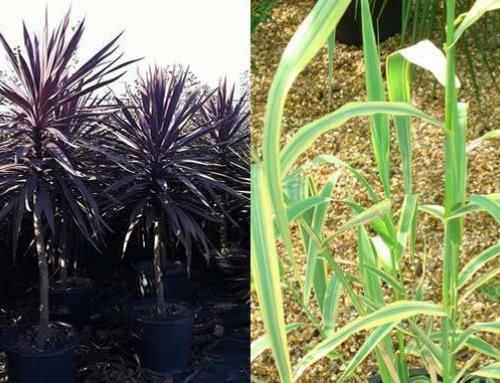Working with Architectural Plants for the Hardy Tropical Garden by Myles Challis
If you want to create an exotic or tropical effect in the garden then there are some essential architectural plants with tropical allure that you will need to achieve this. Most are adaptable when it comes to sun or shade, all are hardy and suited to UK gardens. We also suggest a few alternatives just in case you should need them.
When thinking of warmer climes the plants which generally first come to mind are the palm trees. There are several we can grow here in the South of the British Isles of varying degrees of hardiness but the easiest and hardiest is Trachycarpus Fortunei also known as the Chusan Palm or Windmill Palm. It will grow in full sun or shade – the difference being in shade the leaves will be bigger on longer petioles (stalks) and of a darker green. Its one preference is a position out of strong winds as these can lead to the leaves getting shredded. Either buy fairly young and plant where it will adjust gradually to its position by growing stronger leaves, or create shelter with a windbreak of evergreen hedging. After a number of years this palm will produce quite a tall trunk. Otherwise plant as a fully established specimen palm and the palm will thrive in normal gardens (which are not exposed to open fields and constant strong winds). This palm looks excellent underplanted either with one or two smaller specimen palms or with something completely different such as phormiums. Incidentally the variety Trachycarpus Wagnerianus has smaller but stronger and more upright dark green leaves – but is slower growing.
Chamaerops Humilis – the dwarf fan palm – is very slow growing clump forming palm taking many years to produce any height of trunk. Its slow rate of growth makes it very suitable for planting in a pot and therefore a nice patio plant. It does not need full sun but prefers slightly more sun than the Trachycarpus Palms.
Another plant requiring above all a sheltered position is the banana plant. Their huge paddle shaped leaves are dramatic. They do require extensive wrapping over the Winter months to protect from extreme frosts. The must hardy variety we can plant outside is the Musa Basjoo Banana. It is a fast growing plant requiring regular feeding and watering in the Summer months. It seems to like dappled shade best as full sun causes the leaves to fold up.
The Cordyline Australis is a now very common sight in town gardens. Cordyline Australis is an essential part of architectural schemes. Sometimes referred to as the Torbay Palm, and prolific in Cornish gardens, it is in fact not a palm at all but its palm like appearance and relatively fast growth makes it an extremely useful subject. Compared to palms it is relatively cheap but just as effective. Ideally Cordyline Australis specimens of differing heights should be used where possible together.
There are also very attractive colourful low growing cordylines often used for architectural underplanting and to provide structure in small gardens. They also make excellent pot plants. Very cold winters especially a lot of snow can kill even the normally fully hardy Cordyline Australis unless the foliage is tied up and wrapped around with several layers of hessian including the trunks. The potted colourful varieties such as purple and variegated cordylines must be moved inside in extreme frosts to ensure their survival.
Probably the most popular and best-selling architectural plant of recent years has been the hardy tree fern – Dicksonia Antarctica. With its huge fern leaves spreading elegantly upwards and outwards from its long, erect, brown trunk.
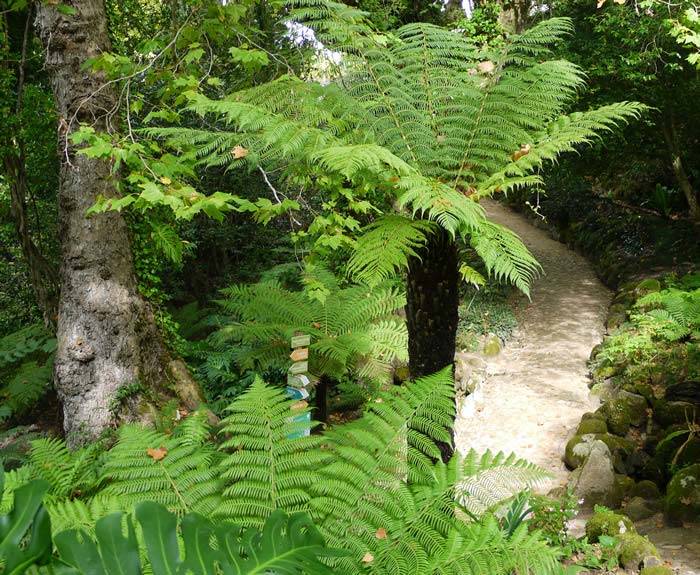
Garden Architecture – Dicksonia Antarctica Tree Ferns


